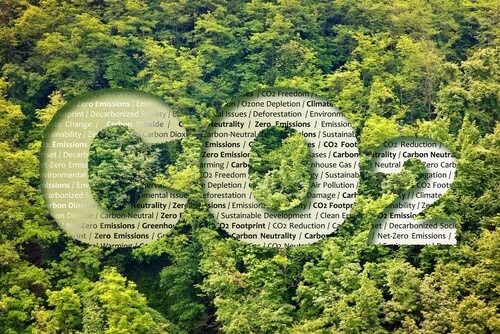Commercial, GHG Emissions - September 13, 2024
Google Partners for DAC
Tech company Google announced a new deal to purchase carbon removal credits to decarbonize the global economy and reach its goal of net zero emissions across its operations.
Google will purchase the credits from direct air capture (DAC) provider Holocene at the lowest price on record for this technology: $100 per ton for delivery by the early 2030s, according to an announcement.
The company will provide financial support up front while making a long-term commitment to accept credits from Holocene’s lower-cost facilities that are scheduled for delivery in the early 2030s. Holocene’s projects qualify for the U.S. government’s 45Q tax credit on top of Google’s payment, which incentivizes investment in DAC by providing suppliers $180 per ton of carbon removed. Through this deal Holocene will capture and store 100,000 tons of carbon dioxide (CO2) by the early 2030s.
DAC is a promising technology because it uses chemical or physical processes to extract CO2 directly from the air, after which it is stored permanently underground or re-used in products. DAC could be an important part of the solution to collectively remove billions of tons of CO2 from the atmosphere annually by 2050 to halt climate change.
Costs need to fall dramatically for DAC as it already faces a long road to achieving commercial viability and scale. Currently no DAC plant is delivering more than 2,000 tons of carbon removal credits per year.
While the technology is improving, prices remain in the many hundreds of dollars per ton of CO2 removed.
Google’s partnership with Holocene aims to address one of the key barriers facing DAC technologies: the hefty price tag. While Holocene’s technology is still in the early stages of development, it has the potential to bring down costs significantly over time.
The foundation of Holocene’s technology is its chemistry. The company uses amino acids and other organic compounds to continuously capture CO2 from ambient air. Once captured, the CO2 is concentrated and heated to low temperatures to create a pure stream of CO2 that can be transported and permanently stored.
This approach helps Holocene address the high energy and capital costs that make DAC so challenging. Low-temperature heat can be sourced from carbon-free or waste heat sources, and Holocene's chemical process uses widely available industrial equipment.
Read These Related Articles:
- Renewable Energy Buyers' Principles adds 6 new participants to growing list of large-scale names
- Google Signs PPA in Netherlands, Belgium
- The LEGO Group Enters $2.4M Carbon-Removal Agreement
- Google, Microsoft Launch Initiative to Scale Clean Energy Tech
- Google Sets Aim for $35 Million in Carbon Credits
Stay Up-To-Date












